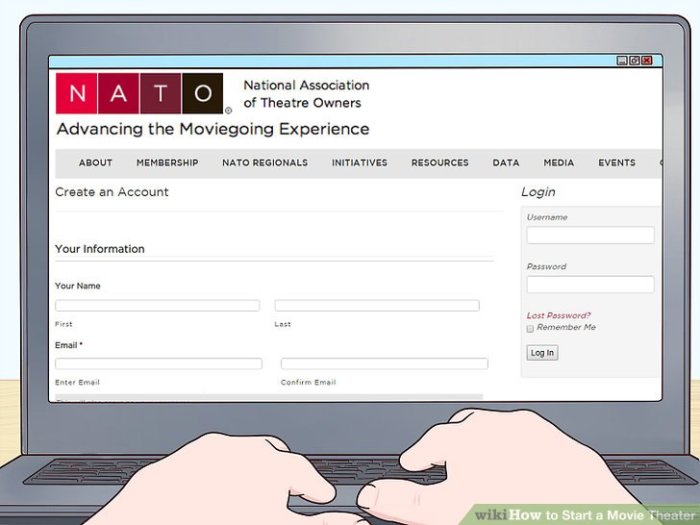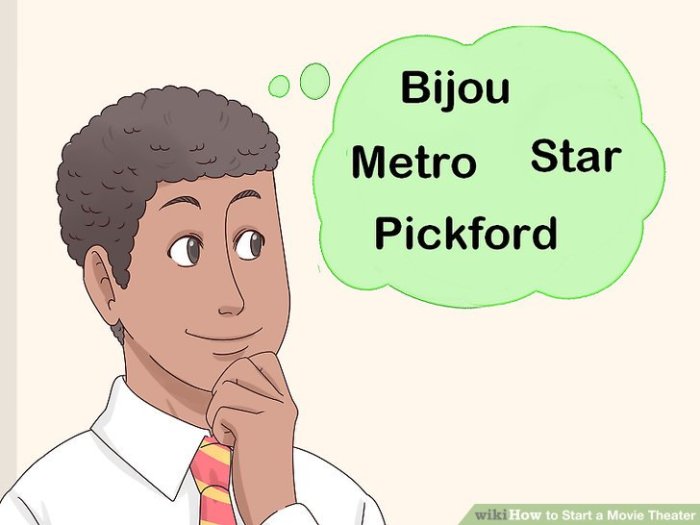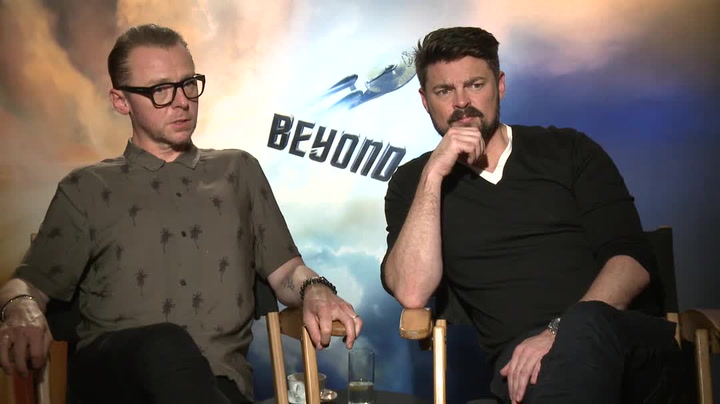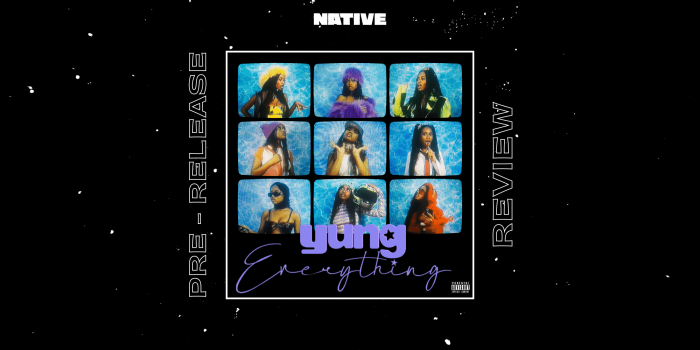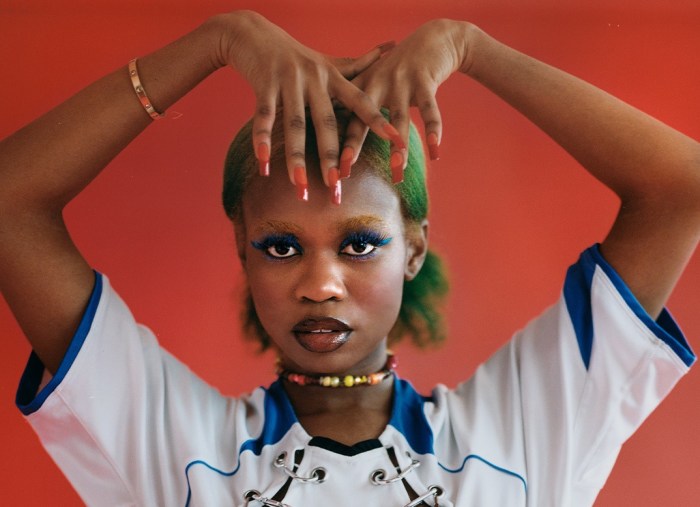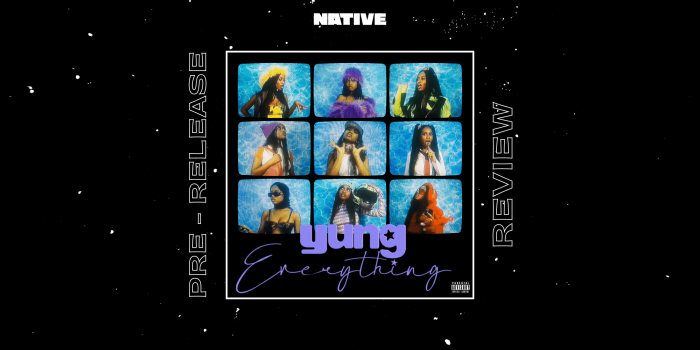Make a Lavender Insect Repellent: Tired of itchy bites and buzzing insects ruining your outdoor fun? This guide will walk you through creating your own natural lavender insect repellent. We’ll explore various methods, from simple infusions to potent essential oil blends, providing a comprehensive approach to crafting a safe and effective repellent that keeps those pesky bugs away.
Discover the natural power of lavender to create your own customized protection.
Learn about the ingredients, formulation methods, safety considerations, effectiveness, storage, applications, and even the environmental impact of your homemade repellent. This detailed guide covers everything you need to know, making it a go-to resource for creating your own bug-free haven.
Ingredients & Sources

Crafting a potent lavender insect repellent requires a blend of carefully chosen natural ingredients. Understanding their origins and properties empowers you to create a truly effective and safe solution for keeping those pesky insects at bay. This exploration delves into the essential components, their availability, and the cost-effectiveness of each.
Natural Ingredients for Insect Repellency
A successful insect repellent often relies on a combination of natural ingredients, each contributing to its effectiveness. Lavender, the star ingredient, is not alone in its insect-repelling prowess. Other botanicals and extracts play crucial roles in the overall efficacy of the repellent.
- Lavender (Lavandula angustifolia): A well-known herb for its calming aroma and insect-repelling properties. Lavender’s effectiveness stems from its volatile compounds, particularly linalool and cineole, which deter insects. Lavender can be easily grown in many climates, or purchased from local nurseries or online retailers.
- Citronella (Cymbopogon nardus): Known for its strong, lemony scent, citronella is another highly effective insect repellent. The primary component contributing to its repelling power is citronellal. Citronella is readily available as oil or dried grass, either grown at home or purchased commercially.
- Lemon Balm (Melissa officinalis): This fragrant herb contains citronellal, similar to citronella, contributing to its insect-repelling properties. Lemon balm is easy to grow and maintain in gardens, or available in dried form or essential oil.
- Rosemary (Rosmarinus officinalis): Rosemary, with its characteristic piney aroma, contains monoterpenes that contribute to its insect-repelling qualities. Rosemary can be grown easily in various climates or purchased from garden centers.
- Eucalyptus (Eucalyptus globulus): Eucalyptus oil, rich in cineole and other volatile compounds, is a strong insect repellent. Eucalyptus oil is readily available in health food stores or online.
Ingredient Sourcing and Availability
The availability and cost of ingredients can vary significantly depending on the source. Homegrown ingredients, while potentially more time-consuming, can often be more cost-effective in the long run.
- Homegrown Lavender: If you have a garden, growing your own lavender is an excellent option. Start with a few seedlings, and you’ll have a consistent supply of fresh lavender flowers. This method is environmentally friendly and can be a rewarding experience. Be mindful of the amount of space needed.
- Commercial Extracts: For convenience, commercially available lavender and other essential oils provide a quick source. Ensure you select reputable brands to guarantee quality and purity. These are readily available online or in health food stores.
- Dried Herbs: Dried herbs like lavender, rosemary, and lemon balm can be purchased from online retailers or specialty stores. This offers a more convenient way to obtain these ingredients, especially when fresh herbs are unavailable.
Estimated Costs for a Small-Scale Repellent
The cost of creating a small-scale lavender insect repellent depends on the ingredients and sourcing methods. The table below provides an estimated cost for a small batch of repellent.
| Ingredient | Source | Estimated Cost (USD) |
|---|---|---|
| Lavender | Homegrown | $0-5 (depending on the quantity) |
| Lavender Oil | Commercial | $5-15 (per 10ml bottle) |
| Citronella Oil | Commercial | $5-10 (per 10ml bottle) |
| Rosemary | Dried (online) | $3-8 (per 100g) |
| Lemon Balm | Dried (online) | $4-9 (per 100g) |
Note: Prices are estimates and may vary based on the market, retailer, and quantity purchased.
Formulation Methods

Crafting your own lavender insect repellent offers a satisfying blend of natural ingredients and personalized control. This section explores various methods for creating a potent and effective repellent, from simple infusions to more complex blends, and provides insights into their effectiveness and longevity. Understanding these techniques will empower you to choose the approach best suited to your needs and preferences.
Infusion Methods
Infusion methods utilize the natural properties of lavender to create a concentrated repellent. These methods generally involve steeping lavender in a carrier oil, allowing the beneficial compounds to leach into the oil over time. This process creates a readily applicable solution, though the longevity may be somewhat shorter than other methods.
- Simple Lavender Oil Infusion: Combine 1/4 cup of high-quality lavender essential oil with 1 cup of a carrier oil (like jojoba or almond oil). Allow the mixture to steep in a cool, dark place for at least 2 weeks, shaking daily. Strain the mixture to remove any plant matter. This method creates a potent, readily applicable repellent, ideal for daily use.
- Double Infusion (More Intense): For a more concentrated infusion, consider a double infusion. Start with 2 tablespoons of dried lavender flowers and steep them in 1 cup of carrier oil for 2 weeks. Then, take the infused oil and steep it with 1 tablespoon of lavender essential oil for another 1 week. This results in a strong lavender fragrance and a more effective repellent.
Essential Oil Blends
Combining lavender essential oil with other natural repellents can enhance the effectiveness and longevity of the repellent. This approach often yields a stronger, longer-lasting repellent than single-infusion methods.
- Lavender-Lemon Blend: Combine 10 drops of lavender essential oil with 5 drops of lemon essential oil, and mix thoroughly with 2 tablespoons of carrier oil. This blend leverages the known insect-repelling properties of both lavender and lemon, creating a potent and versatile repellent. Test on a small area first to check for skin reactions.
- Lavender-Cedarwood Blend: For a more potent repellent, consider 15 drops of lavender and 10 drops of cedarwood essential oil, mixed with 2 tablespoons of carrier oil. Cedarwood’s repelling properties complement lavender’s, providing a longer-lasting effect. This is particularly useful in areas with a high concentration of insects.
Solid Repellents, Make a Lavender Insect Repellent
Solid repellents offer a convenient and long-lasting solution. They often involve incorporating lavender into a wax or balm base.
- Lavender-Beeswax Balm: Combine 1/2 cup of beeswax with 1/4 cup of carrier oil (like coconut oil) and melt over low heat. Add 10-15 drops of lavender essential oil and stir until well combined. Pour into molds and allow to cool completely. This creates a solid balm that can be applied to clothing or skin, providing a long-lasting repellent. The beeswax acts as a carrier, extending the longevity of the lavender’s effects.
Comparison of Methods
| Method | Ingredients | Preparation Steps | Effectiveness | Longevity |
|---|---|---|---|---|
| Lavender Oil Infusion | Lavender essential oil, carrier oil | Steep oil in carrier oil for 2+ weeks | Good | Moderate |
| Essential Oil Blend | Lavender essential oil, other essential oils, carrier oil | Combine oils, mix with carrier oil | Good to Excellent | Moderate to Long |
| Solid Repellent (e.g., Balm) | Beeswax, carrier oil, lavender essential oil | Melt beeswax, add oils, pour into molds | Excellent | Long |
Safety Considerations: Make A Lavender Insect Repellent
Creating a natural insect repellent is fantastic, but safety is paramount. We need to be mindful of potential sensitivities and reactions, especially when working with essential oils and other concentrated ingredients. Proper handling and dilution techniques are crucial to avoid any adverse effects. A patch test is a vital step to ensure the repellent is safe for your skin before full application.
Potential Allergic Reactions and Sensitivities
Lavender, while generally considered safe, can trigger allergic reactions in some individuals. Similar to other essential oils, sensitivities can vary significantly. People with known allergies to plants in the mint family, such as chamomile or basil, might also be sensitive to lavender. Other ingredients in the repellent, like carrier oils or preservatives, can also cause allergic reactions.
Thorough research into potential cross-reactivities is vital before using any new product. Always consult a healthcare professional if you have concerns about allergies or sensitivities.
Safe Handling Practices for Essential Oils
Essential oils are highly concentrated plant extracts. Care must be taken during handling and mixing to avoid skin irritation or eye contact. Use gloves when handling concentrated essential oils, and work in a well-ventilated area. Always dilute essential oils with a carrier oil before applying them to the skin. Improper dilution can lead to skin irritation or burns.
Follow the recommended dilution rates carefully to maximize effectiveness and minimize risks. Store essential oils in airtight containers in a cool, dark place to preserve their quality and prevent evaporation.
Importance of Patch Testing
A patch test is an essential precautionary measure before applying any new topical product. A small amount of the diluted insect repellent is applied to a discreet area of skin, like the inside of the forearm. Observe the area for 24-48 hours for any signs of redness, itching, or swelling. If no reaction occurs, the repellent can be safely used.
If a reaction is observed, discontinue use immediately and consult a healthcare professional. This proactive approach can help identify potential sensitivities before widespread application, potentially preventing discomfort or more serious reactions.
Appropriate Dilution Rates and Application Methods
Proper dilution of essential oils is crucial to minimize risks. Always follow the recommended dilution ratios for your chosen carrier oil and essential oil blend. Over-dilution may not provide adequate insect-repelling power, while under-dilution can lead to skin irritation. Apply the repellent sparingly to exposed skin areas, avoiding contact with eyes and mucous membranes. Focus on areas where insects are likely to land, like arms and legs.
Re-apply as needed, but always follow the recommended frequency.
Summary Table of Potential Risks, Precautions, and Mitigation Strategies
| Potential Risk | Precautions | Mitigation Strategies |
|---|---|---|
| Allergic reaction to lavender or other ingredients | Patch test before full application | Use a diluted solution and monitor for reaction. Consult a doctor if needed. |
| Skin irritation from concentrated essential oils | Wear gloves and work in a well-ventilated area | Dilute essential oils with carrier oils according to the recommended ratio. |
| Eye contact with essential oils | Avoid getting essential oils in eyes | Wear eye protection when handling concentrated oils. Rinse eyes thoroughly with water if contact occurs. |
| Ineffective insect repellent | Appropriate dilution and application methods | Follow recommended dilution ratios and re-apply as needed. |
Effectiveness & Efficacy
Lavender’s gentle aroma is often associated with relaxation, but its potential as an insect repellent is equally intriguing. This section dives into the effectiveness of lavender-based repellents against common pests and explores the scientific reasoning behind its repelling properties. We’ll also examine factors that can influence its efficacy and compare it to other commercially available options.Lavender’s reputation as a natural insect repellent stems from its unique chemical composition.
Certain compounds, like linalool and linalyl acetate, are thought to be responsible for deterring insects. These compounds, released from the lavender plant, might disrupt the insect’s sensory perception, leading them to avoid the treated area.
Ever wanted to make a lavender insect repellent? It’s surprisingly easy and smells amazing! While I’m busy concocting my latest batch, I just had to share the exciting news that gesaffelstein and the weeknd teased a new song. Check out the details on this gesaffelstein and the weeknd tease new song watch. Hopefully, the calming scent of lavender will keep those pesky bugs away while I’m listening to the new track! Back to the repellent – I’m thinking of adding some lemon balm for extra punch.
Effectiveness Against Common Insects
Lavender’s effectiveness varies depending on the insect species. While promising results have been observed against mosquitoes and flies, its impact on moths might be less significant. Field trials and laboratory studies are often needed to fully assess its effectiveness against different insect types.
Scientific Basis for Insect-Repelling Properties
The scientific basis for lavender’s insect-repelling properties is largely based on the presence of specific volatile organic compounds (VOCs) like linalool and linalyl acetate. These compounds are thought to disrupt the olfactory systems of insects, making them less likely to detect and approach the repellent.
“Research suggests that lavender’s VOCs may interfere with the insects’ ability to perceive pheromones and other chemical cues that attract them.”
This disruption of sensory perception is a key mechanism for its effectiveness.
Factors Affecting Repellent Effectiveness
Several factors can influence the effectiveness of a lavender insect repellent. Environmental conditions, such as temperature and humidity, can impact the release and evaporation rates of the repellent’s active compounds. Also, the concentration of lavender oil in the repellent, as well as the method of application, plays a crucial role. Furthermore, the specific species of insect being targeted also affects the effectiveness.
Some insects might be more susceptible to lavender’s repelling properties than others.
Testing Methods for Assessing Repellent Efficacy
Several methods are employed to assess the efficacy of insect repellents, including controlled laboratory trials and field studies. Laboratory trials often involve exposing insects to various concentrations of the repellent and measuring the repellent’s effectiveness over time. Field studies involve testing the repellent in real-world scenarios, observing the insect populations in treated and untreated areas. These studies allow researchers to gain a better understanding of how effective the repellent is in diverse environments.
Comparison with Other Commercial Repellents
| Repellent Type | Effectiveness Against Mosquitoes | Effectiveness Against Flies | Effectiveness Against Moths | Cost |
|---|---|---|---|---|
| Lavender | Moderate | Moderate | Low | Low |
| DEET | High | High | Moderate | Moderate |
| Picaridin | High | High | Moderate | Moderate |
The table above provides a basic comparison of lavender repellent with other commonly used repellents. Note that the effectiveness is influenced by many factors, including the specific product formulation and environmental conditions. For instance, DEET and Picaridin are often more effective against mosquitoes and flies in higher concentrations.
Storage & Preservation
Proper storage is crucial for maintaining the effectiveness and safety of your lavender insect repellent. Ensuring the correct conditions prevents degradation of the active ingredients and prolongs the repellent’s shelf life. This section details the ideal storage methods for various formulations, helping you keep your homemade lavender repellent potent and safe to use.Storing lavender insect repellent correctly is vital to preserving its effectiveness and safety.
This involves choosing appropriate containers, maintaining optimal storage conditions, and understanding the shelf life of different formulations. Identifying signs of spoilage is also key to ensuring you’re using a safe and potent product.
Ideal Storage Containers
Proper containers play a critical role in preserving the quality of your lavender repellent. Glass or airtight plastic containers are the best choices. These materials prevent the repellent from interacting with the container, which could alter its properties or degrade the active compounds. Avoid using metal containers as some metals can react with certain ingredients, leading to a loss of effectiveness or the formation of harmful compounds.
Storage Conditions
Maintaining optimal storage conditions is essential for preserving the potency and safety of your lavender repellent. Store your repellent in a cool, dark, and dry place. Exposure to direct sunlight, high temperatures, or excessive humidity can accelerate the degradation of the lavender extract and other ingredients, diminishing its effectiveness. A cool, dark pantry or a cupboard away from direct sunlight are suitable locations.
Shelf Life and Spoilage Identification
The shelf life of your lavender insect repellent varies depending on the formulation and storage conditions. Generally, homemade repellents will have a shorter shelf life compared to commercially produced ones. The potency of the repellent can decline over time, affecting its effectiveness. Look for signs of spoilage such as changes in color, texture, or odor. A noticeable change in any of these aspects could indicate that the repellent has degraded and is no longer effective or safe to use.
Table of Ideal Storage Conditions
| Repellent Type | Ideal Temperature (°C) | Ideal Humidity (%) | Ideal Location | Estimated Shelf Life (Months) |
|---|---|---|---|---|
| Lavender Oil-Based | 10-25 | 30-60 | Cool, dark cupboard | 6-12 |
| Lavender Extract-Based | 5-25 | 30-50 | Refrigerator or cool dark cupboard | 3-9 |
| Lavender Essential Oil Blend | 10-25 | 30-60 | Cool, dark cupboard | 8-18 |
Applications & Uses
Lavender insect repellent isn’t just for keeping pesky bugs away; it’s a versatile tool that can be integrated into various aspects of your life. From warding off mosquitoes in your garden to creating a bug-free sanctuary in your home, this natural solution offers a wide range of applications. Its gentle nature makes it suitable for both indoor and outdoor use, and for people of all ages.This section explores the diverse ways to utilize lavender insect repellent, from simple topical application to more elaborate DIY devices.
We’ll also examine its effectiveness across different environments, highlighting how its use can enhance your overall experience.
Topical Application
Lavender oil, diluted appropriately, is an excellent topical repellent. Direct application to exposed skin, like arms and legs, can effectively deter insects. Carefully follow the dilution ratios provided in the Formulation Methods section to avoid skin irritation. Applying the repellent 15-30 minutes before outdoor activities is crucial for optimal protection.
Room Sprays
Lavender’s pleasant scent also makes it suitable for room sprays. Diluted lavender oil solutions can be sprayed in rooms to create a fragrant and insect-repellent atmosphere. The spray can be effective in deterring flying insects like mosquitoes and flies, creating a more pleasant indoor environment. Consider spraying around windows and doors for maximum coverage.
DIY Devices
Beyond topical application and room sprays, lavender repellent can be incorporated into homemade devices. For example, you can create a simple sachet by placing dried lavender flowers in a cloth bag and hanging it in the garden or near windows. Similarly, a homemade diffuser using a small bowl of water with lavender essential oil can create a fragrant and insect-repellent atmosphere.
Experiment with different techniques to discover your preferred method for maximizing its effectiveness.
Effectiveness in Different Environments
Lavender repellent demonstrates varying degrees of effectiveness in different environments. Its effectiveness against mosquitoes in a garden is generally high, especially when combined with other preventative measures like removing standing water. In homes, lavender repellent can help deter flies and other indoor insects, though its effectiveness might be less significant against crawling insects like ants.
Effectiveness Across Outdoor Activities
Lavender’s effectiveness in deterring insects during outdoor activities depends on the type of activity and the specific insect population. For example, while it can be effective against mosquitoes during camping trips, its efficacy against biting midges in a wooded area might be limited.
Application Method Suitability Table
| Application Method | Suitability for Homes | Suitability for Gardens | Suitability for Outdoor Activities |
|---|---|---|---|
| Topical Application | Good, especially for exposed skin | Good, especially for exposed skin | Good, especially for exposed skin |
| Room Sprays | Excellent, for deterring indoor insects | Good, to create a repellent atmosphere | Limited, primarily for indoor areas |
| DIY Devices (e.g., sachets, diffusers) | Good, for localized protection | Excellent, for targeted areas | Good, for localized protection |
Environmental Impact
Lavender, a naturally occurring plant, offers a potentially sustainable approach to insect repellent. However, careful consideration of the entire lifecycle is crucial. From sourcing the lavender to the final disposal of the repellent, understanding the environmental footprint is vital for responsible product creation. This section explores the environmental impact of lavender insect repellent, focusing on the sustainability of ingredient sourcing, potential effects on beneficial insects, and a comparative analysis of different ingredients and formulations.
Sustainability of Lavender Sourcing
The sustainability of lavender sourcing hinges on responsible farming practices. Organic farming methods, minimizing water usage, and employing sustainable harvesting techniques are crucial. Certifications like USDA Organic can provide assurance of environmentally sound practices. Wild-harvested lavender should be used sparingly and only from sustainably managed areas to prevent habitat disruption. The demand for lavender can also influence the sustainability of the supply chain.
Supporting local lavender farmers through direct purchasing, or utilizing sustainably sourced lavender extracts, minimizes transportation emissions and supports local economies.
Making a lavender insect repellent is a great way to keep those pesky bugs away, and it’s surprisingly easy. While we’re on the topic of unusual requests, did you hear about Roger Waters urging Madonna to boycott the Eurovision Israel performance in a recent Guardian op-ed? This fascinating piece really got me thinking about the complexities of global events, but back to the lavender repellent – it’s a fantastic natural way to keep the bugs at bay.
The scent is soothing and the homemade option is a great way to enjoy the benefits of nature.
Impact on Beneficial Insects
Lavender, while effective against some pests, might also affect beneficial insects. The presence of lavender essential oils, while generally safe for humans and pets, can have variable impacts on insects. Some insects, such as pollinators like bees and butterflies, might experience mild negative effects from direct exposure to high concentrations of lavender oil. Understanding the specific sensitivities of different beneficial insect species to lavender is crucial.
Studies on the long-term impact of lavender exposure on beneficial insects are ongoing and vital for informed decision-making. Careful consideration of the balance between pest control and the preservation of biodiversity is essential.
Environmental Considerations of Ingredients and Methods
Different ingredients and formulations have varying environmental impacts. Evaluating these factors is crucial for responsible product development. A comparative analysis of different components is presented below.
Making a lavender insect repellent is a fantastic way to keep those pesky bugs away while you’re enjoying the outdoors. It’s a simple, natural, and surprisingly effective way to stay comfortable. Plus, think about how much more romantic it would be to enjoy a relaxing evening outdoors, knowing you’re not being eaten alive by mosquitoes. You can elevate that outdoor experience even further by incorporating some of the tips in this guide on Become a Romantic Man , and create a truly memorable evening.
The fresh scent of lavender will complete the romantic atmosphere, and the repellent will keep those unwanted visitors away. Perfect for a special date or a quiet evening alone!
| Ingredient/Method | Sustainability | Impact on Beneficial Insects | Other Environmental Considerations |
|---|---|---|---|
| Organic Lavender Essential Oil | High – if from certified organic farms | Potentially mild negative impact on some species | Low water and pesticide use if organic |
| Synthetic Fragrances | Low – often derived from petroleum | Potentially high impact on some beneficial insects | Significant contribution to plastic waste if in plastic bottles |
| Natural Oils (e.g., Citronella) | Variable – depends on the sourcing | Potential impact on some beneficial insects | Consider the ecological footprint of the source |
| Plant-Based Carrier Oils (e.g., Jojoba) | High – readily renewable resources | Low to negligible impact | Renewable and often biodegradable |
The table highlights the importance of considering multiple factors when choosing ingredients and methods. The choice of packaging material and manufacturing processes also contributes to the environmental footprint.
Recipe Variations
Crafting a truly effective lavender insect repellent often involves experimenting with different ingredient combinations and ratios. This section delves into three distinct recipes, each designed to provide a unique experience and potentially target specific needs or preferences. The recipes vary in their level of complexity, cost, and anticipated effectiveness, offering a spectrum of options for DIY enthusiasts.
Lavender Essential Oil-Based Repellent
This recipe emphasizes the potent scent of lavender essential oil for a strong, fast-acting repellent. Lavender oil, known for its strong fragrance, acts as the primary deterrent. The addition of carrier oils like jojoba or almond oil helps to dilute the essential oil, making it easier to apply and reducing the risk of skin irritation.
- Ingredients: 10 drops lavender essential oil, 1 tablespoon jojoba oil, 1 tablespoon almond oil, 10 ml of water.
- Instructions: Combine all ingredients in a small, clean bottle. Shake well to ensure proper mixing. Apply liberally to exposed skin, focusing on areas prone to insect bites.
Lavender-Infused Homemade Spray
This recipe focuses on a homemade spray, utilizing the natural properties of lavender for insect repulsion. It relies on a solution that infuses lavender with water, a common and accessible approach.
- Ingredients: 2 cups water, 4-5 sprigs fresh lavender, 2 tablespoons white vinegar, 20 ml of vegetable glycerin.
- Instructions: Place lavender sprigs in a saucepan with water. Bring to a simmer, then reduce heat and simmer for 15 minutes. Allow to cool completely. Strain the mixture, discarding the lavender.
Combine the strained lavender water, vinegar, and glycerin in a spray bottle. Shake well before use. Apply liberally to exposed skin.
Lavender-Lemon Repellent
This recipe combines the insect-repelling properties of lavender with the citrusy scent of lemon. The lemon oil complements the lavender, creating a dual-action repellent. This option is particularly suitable for those seeking a stronger scent profile.
- Ingredients: 8 drops lavender essential oil, 5 drops lemon essential oil, 2 tablespoons olive oil, 10 ml of water.
- Instructions: Combine all ingredients in a small, clean bottle. Shake well to ensure proper mixing. Apply liberally to exposed skin, focusing on areas prone to insect bites.
Recipe Comparison Table
| Recipe | Ingredients | Cost (estimated) | Expected Effectiveness |
|---|---|---|---|
| Lavender Essential Oil-Based Repellent | Lavender essential oil, carrier oils | Moderate | High (due to high concentration of essential oil) |
| Lavender-Infused Homemade Spray | Fresh lavender, water, vinegar, glycerin | Low | Moderate (relies on infused water) |
| Lavender-Lemon Repellent | Lavender essential oil, lemon essential oil, carrier oil | Moderate | High (combination of scents) |
Concluding Remarks
So, are you ready to embark on a journey to create your own lavender insect repellent? This comprehensive guide provides all the essential information you need, from ingredient sourcing to safety precautions and effective applications. Now you can confidently create a natural and effective solution to keep those unwanted insects at bay. Enjoy your bug-free adventures!

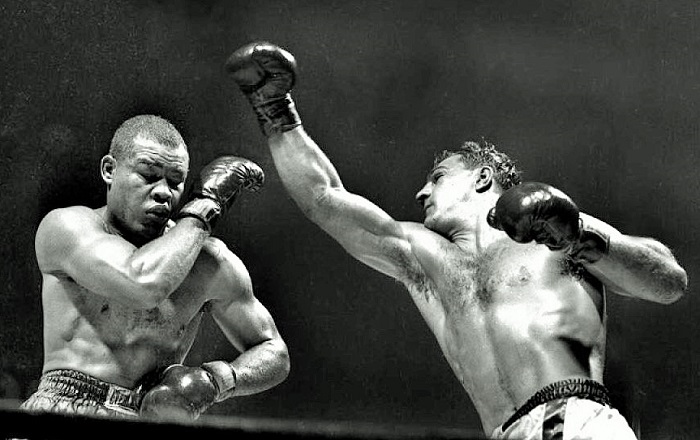
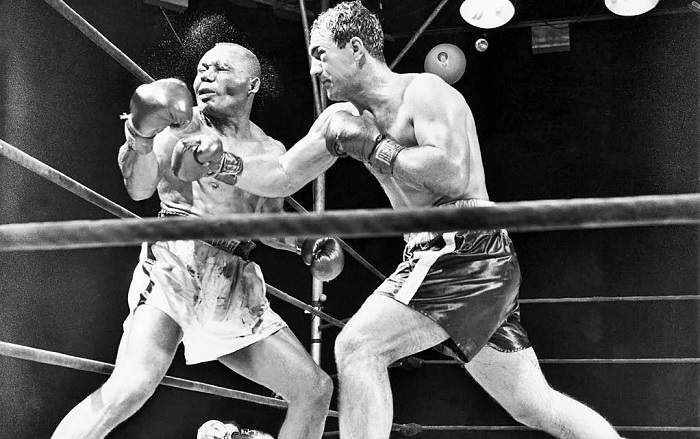
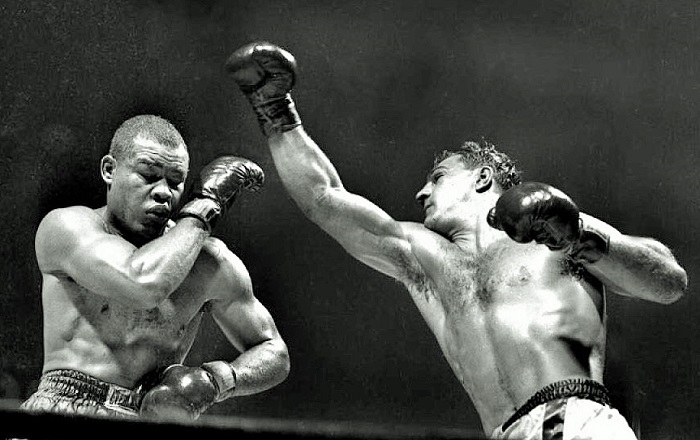

![Mediaboy Musings: The Shins - Port Of Morrow [album review] The shins perform new song the fear on a prairie home companion listen](https://owlgriffin.com/wp-content/uploads/2025/06/7d7c3b46-1.jpg)

